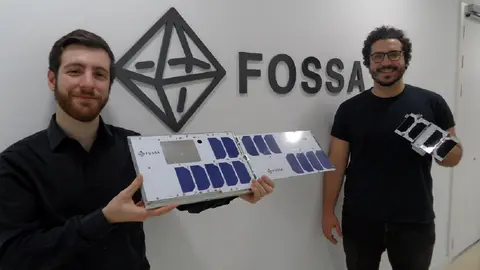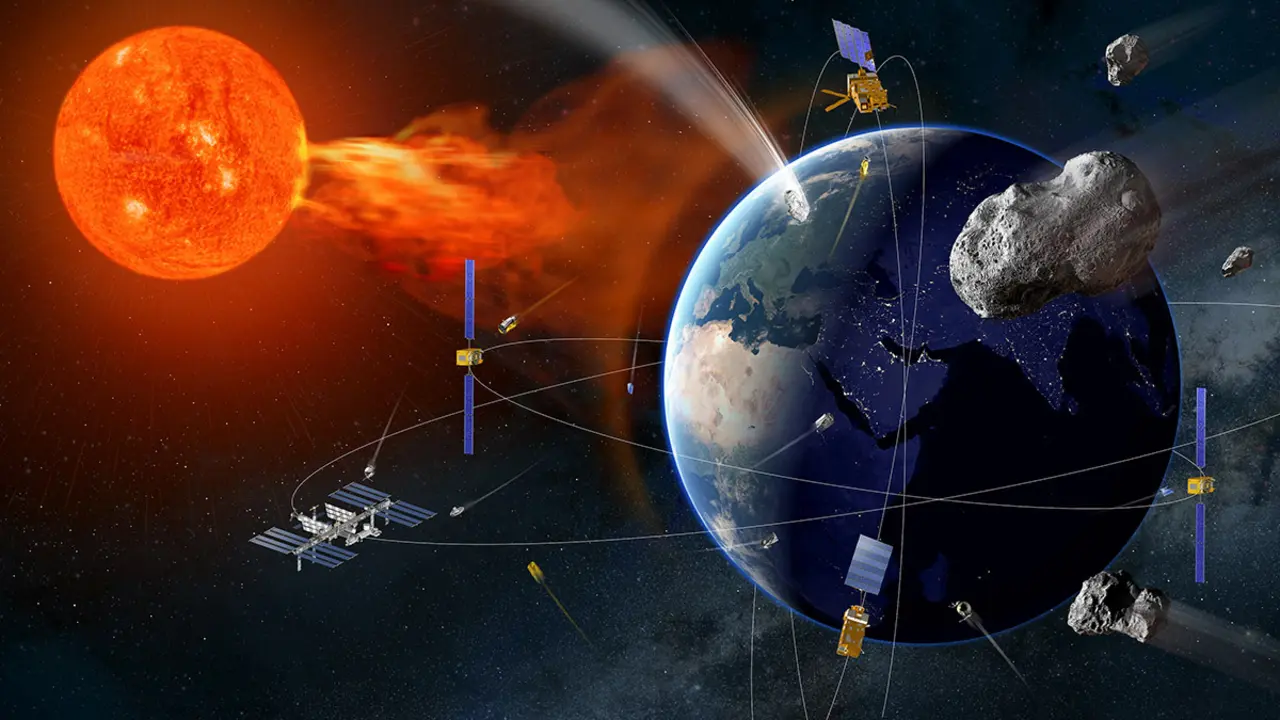These are the 8 Spanish satellites affected by Elon Musk's failed Falcon 9 mission

- Eight satellites from four Spanish companies
- This is what has happened with the last Falcon 9 mission
The global space industry has just been hit hard by the immediate fallout from the recent mid-ascent accident of a SpaceX Falcon 9 rocket.
While the disastrous mishap did not kill any astronauts, it did kill 20 Starlink satellites in the constellation that provides internet services around the world. But its importance lies in the fact that it throws cold water on the Falcon 9 launcher, which with more than 350 successful missions is the strongest pillar on which the enormous and agile US capacity for access to outer space is based, both in manned and unmanned flights.

What has happened has forced SpaceX to immediately halt scheduled Falcon 9 liftoffs, urgently form a Commission of Inquiry and get it underway, as required by the FAA's Office of Commercial Space Transportation. Once the Commission has conducted its investigations and analysis of the flight data and determined the causes of the disaster, it will make public its provisional conclusions and SpaceX will have to implement the corrective measures dictated by the Commission.
All of the above means "a minimum of two to three weeks and a maximum of four to six months", according to Spanish industry sources. Whatever the time frame, the frenetic pace of Falcon 9 launches - one liftoff every 2.7 days - has taken NASA's manned mission programme to the International Space Station (ISS) off track, leaving it once again in the exclusive hands of Russia's Soyuz capsules.
It also dashes the plans of commercial companies and private actors that carry astronauts into space, as well as the launching into orbit of many dozens of scientific, communications, observation satellites and unmanned spacecraft supplying cargo to the ISS.
Eight satellites from four Spanish companies
The inevitable delays and rescheduling also throw into disarray the launch forecasts that SpaceX had communicated months ago to the many companies around the world that had entrusted their satellites to SpaceX, until now the most secure space carrier on the international market. Among them are at least eight satellites from four Spanish companies: Hisdesat, Fossa, Sateliot and Satlantis.
Hisdesat, the strategic services company headed by Miguel Ángel García Primo, had repeatedly confirmed - most recently in a statement on 11 June - that its first new-generation encrypted communications device, the six-tonne Spainsat NG-I, would be put into orbit by a Falcón 9 "at the end of this year". But the situation has changed overnight and the company "still has no details, no news on the time delay", but is confident that the grounding of the launcher "will not be as long as six months".
This view is shared by Fossa Systems CEO Julián Fernández. The executive is of the view that the correction of the failures and the return to flight of the Falcon 9 will be solved "as quickly as possible". He explains that "SpaceX will return the Falcon 9 to service as soon as possible, as neither Elon Musk nor the Biden Administration have any equivalent launcher that can replace it".
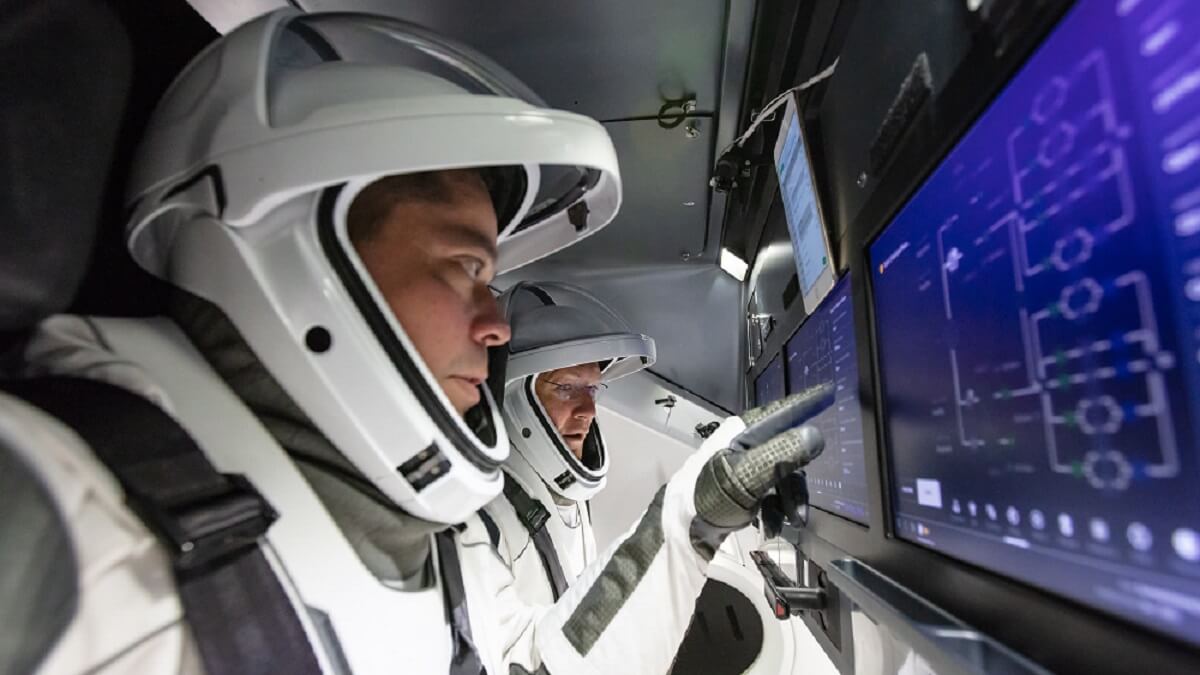
Fossa had planned to launch its three small IoT technology FossaSat satellites in the second half of July from Vandenberg Space Base in California on the shared Transporter-11 mission. However, Fossa has not yet received any communication regarding the delay that SpaceX is contemplating.
The Transporter-11 flight, on which the three FossaSat IoT satellites are due to travel sooner or later, is also due to deliver four small satellites from Sateliot's 5G-IoT constellation into orbit. Slightly smaller than a microwave, their deployment in space means "entering a new dimension, which will allow Spain to lead IoT connectivity on a global scale," says the company. With regard to the delay, the view of its head, Jaume Sanpera, is that "it will be a few weeks".
Satlantis, the company headed by Juan Tomas Hernani, is also one of those affected. Its Garay mini-satellite, weighing 115 kilos and with four telescopes on board, is due to travel on the Transporter-12 mission of the Falcón 9, which was scheduled to take off in October. But they are aware that this date is no longer feasible.
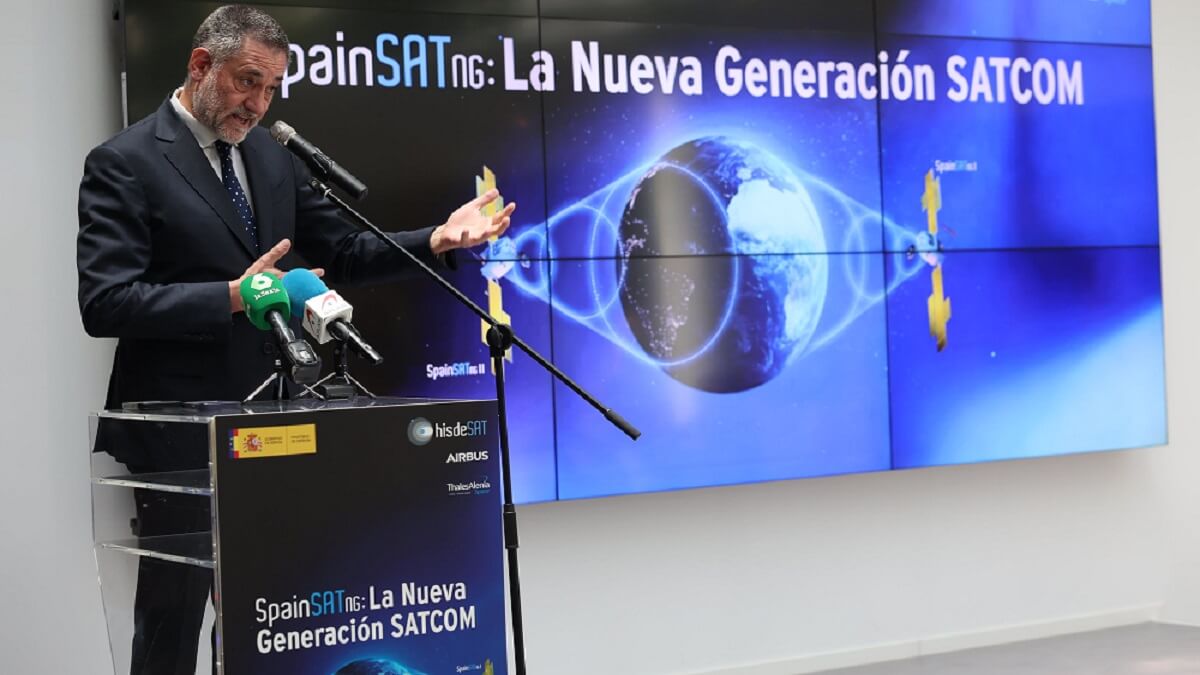
This is what has happened with the last Falcon 9 mission
The company's headquarters in Bilbao have not received any information about the flight rescheduling either. Fortunately for Satlantis, its Horacio satellite, dedicated to quantifying methane gas emissions and monitoring terrestrial infrastructures, coasts and borders, was launched on 4 March on the Falcon 9's Transporter-10 mission.
But what was the accident like? The story begins on the night of 12 July, when a Falcon 9 lifts off from Vandenberg Space Base in California to add 20 Starlink satellites to Elon Musk's constellation of satellites providing internet from space. Although the rocket's first stage propulsion stage functioned normally and landed after completing its mission on an autonomous platform positioned in the Pacific Ocean, the second stage suffered a "liquid oxygen leak", confirms a SpaceX statement.
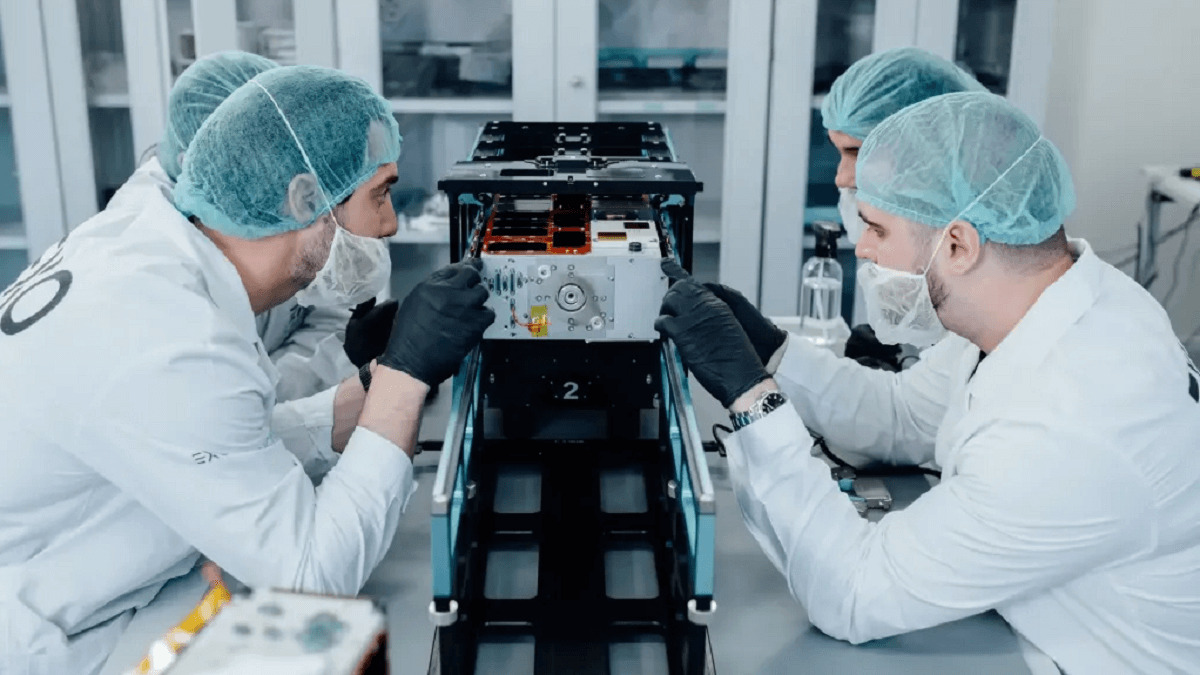
The anomaly caused the upper stage's Merlin Vacuum (M-Vac) rocket engine to place the 20 satellites at 135 kilometres altitude, more than twice the scheduled altitude. As much as technicians on the ground fired the small boosters on each of the 20 spacecraft, they were unable to get them high enough to compensate for the pull of our Blue Planet. The end result will be that they will gradually re-enter the Earth's atmosphere, where they will burn up completely without generating the space debris for which they were designed and built.
SpaceX's mishap investigation team is in the midst of collecting and analysing data to understand the ultimate causes of what happened. By 17 July, the company must submit its first preliminary report to the US Civil Aviation Administration's (FAA) Office of Commercial Space Transportation.
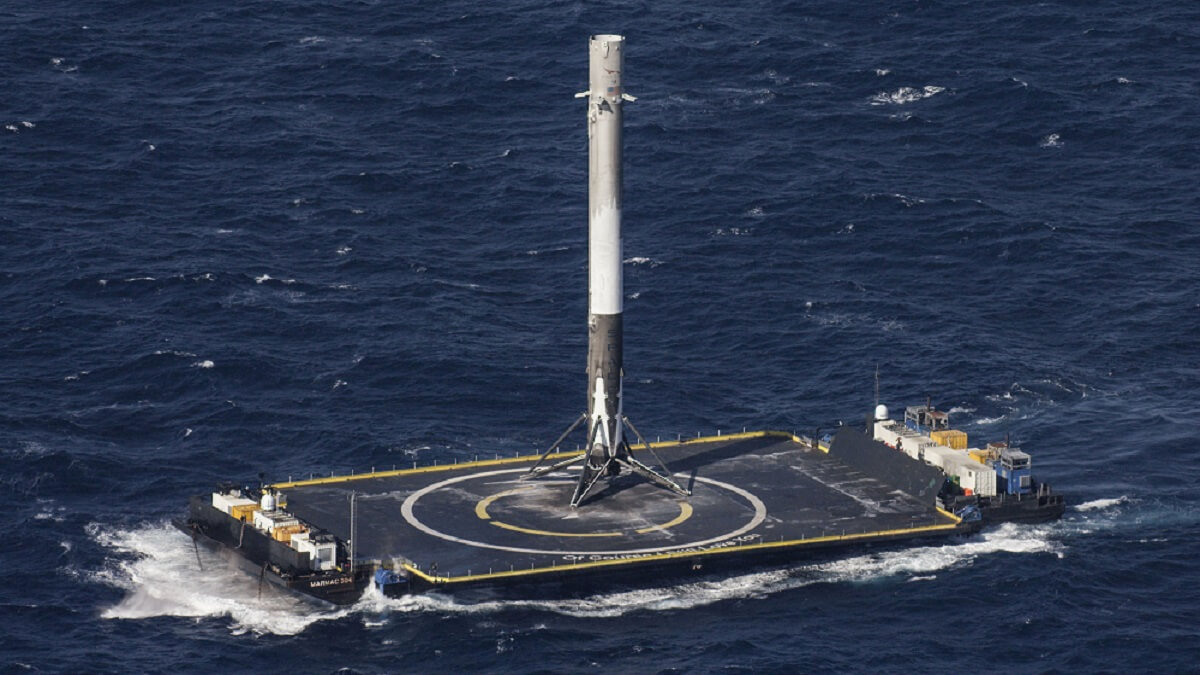
Created in 1984 and attached to the Federal Department of Transportation, the Office of Commercial Space Transportation is responsible for developing standards, granting launch licences and ensuring the safety of rocket launches and re-entries. It is also responsible for ensuring engineering quality, evaluating on-board systems, inspecting launch vehicles, issuing public safety requirements and assessing their environmental impact.
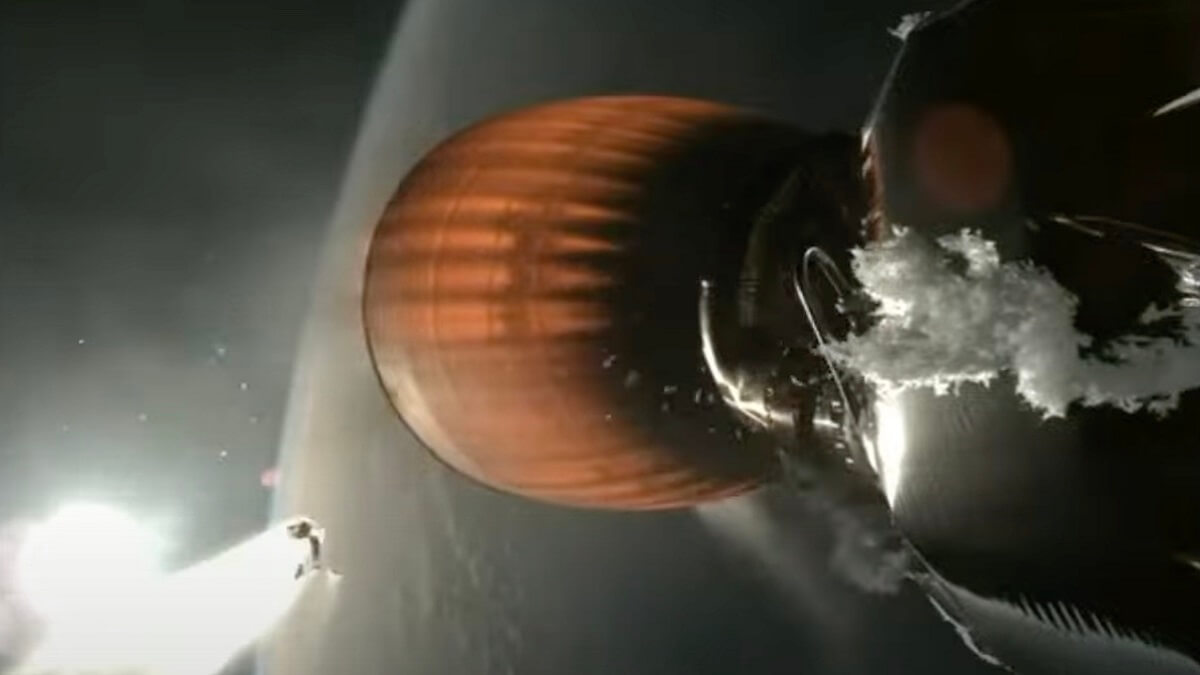
The accident that comes to break SpaceX's continued high rate of workhorse liftoffs. The Falcon 9s remain stored on the ground in SpaceX's hangars until the Commission of Inquiry set up for this purpose, of which NASA is a member, determines the causes of the incident and identifies the corrective actions to be applied by Elon Musk's company. In any case, the resumption of flights will depend on the FAA's approval of the final report, which the entire global space sector is awaiting.



